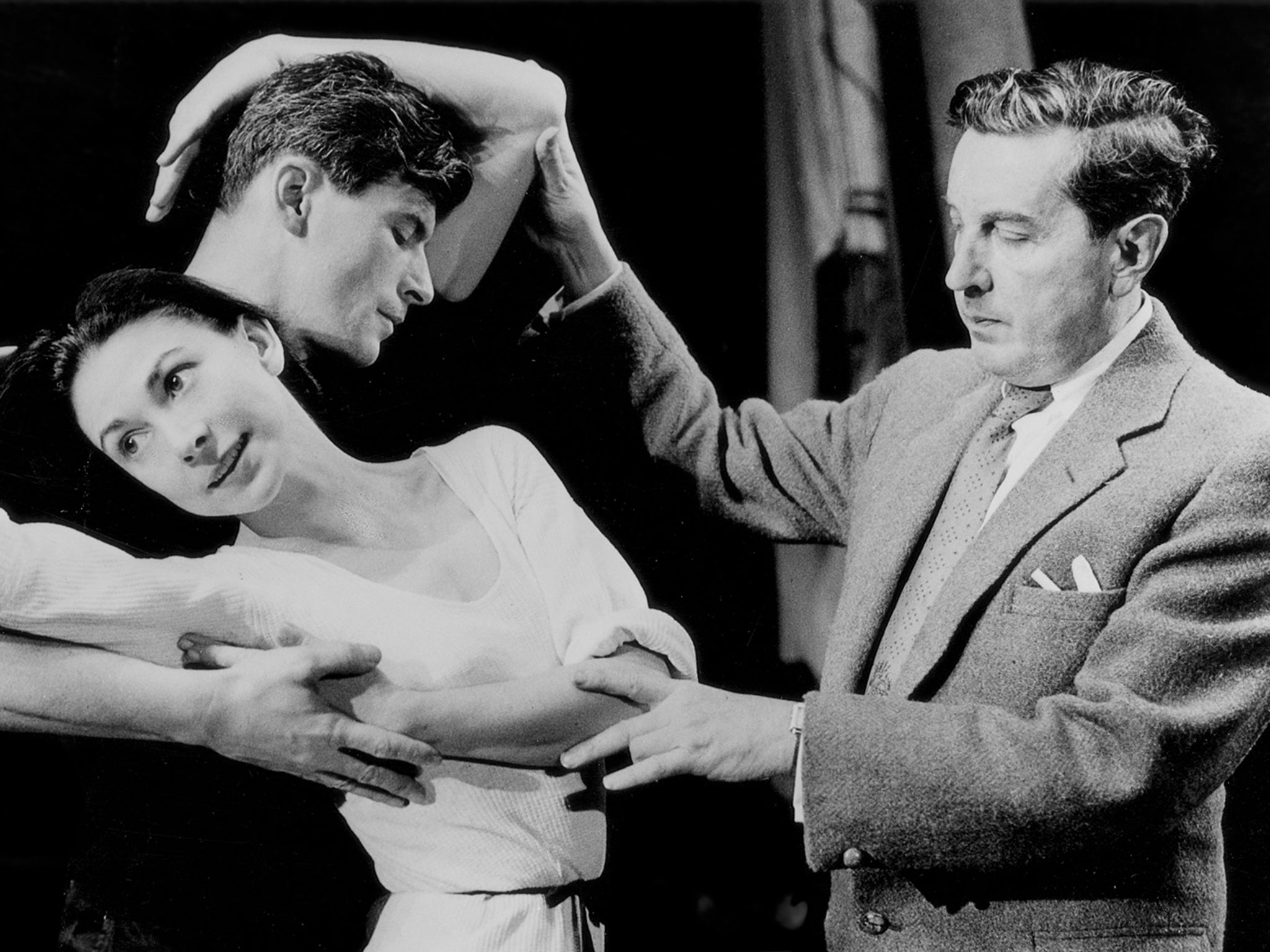Frederick Ashton: Remembering the incredible career of the Royal Ballet's founder choreographer
Ashton will always be essential to the Royal Ballet because his works are our heritage

Frederick Ashton has always been part of my dancing life. When I was growing up in Yorkshire, ballets such as The Two Pigeons, La Fille mal gardée and Les Rendezvous would be performed by the touring company. I knew how important the founder choreographer of the Royal Ballet was and how his choreography, with its subtlety and wit, had shaped and influenced British ballet.
When I joined the Royal Ballet School, he was always somehow present. He wasn’t scary – there were other legends who were much more frightening, but we were all in awe of him. Then in about 1986 when I was a relatively new member of the Sadler’s Wells Royal Ballet, I actually got to work with him when I was chosen to dance in a revival of Valses Nobles et Sentimentales, which he originally choreographed in 1947.
He came into the studio every day and it was quite amazing. He wasn’t overly active – he was 82 at the time, and died two years later – but he used to sit in a chair watching us, smoking, and then he’d get to his feet to correct us. I can still see him to this day pushing the bodies of the women down and trying to get them to dance how he wanted. He’d say “It’s this way darling”, and adjust their heads and the way they carried their arms – and all the while the ash from his cigarette would be falling on the studio floor. Even though the work was really abstract, he wanted us to think of a story within what we were doing – it was never just about doing the steps. That moment with him helped me to understand the essence of Ashton, his insistence on this complicated, shaped flow within the body, the careful placing of the arms and head – what dancers call épaulement – the intricate footwork. He gave you a great sense of the joy of dancing and he always wanted everyone to look their best.
Ashton will always be essential to the Royal Ballet because his works are our heritage. His ballets made us the company we are. It is really important to keep a sense of that style – less showy, more realistic, more delicate than the Russian ballets that had gone before. His musicality and lyricism gave the Royal Ballet a particular route to follow. His ballets are still challenging and difficult for today’s dancers to perform. But if you get it right, it is exhilarating to achieve.
Take La Fille mal gardée, the solos for Lise are so delicate, the pas de deux so complicated. And then with his comic genius he would include a clog dance performed by Widow Simone, a role danced by a man. Ashton’s influences were surprisingly varied. He was born in Peru, never forgot seeing Anna Pavlova, and was steeped in the high classical style. But he drew on English folk dancing, music hall and pantomime, forging something that was completely his own. Ashton was always conscious of the human element. He could make grand statements as a choreographer – Cinderella’s second act solo, for example, is probably one of the greatest ever – but it’s not just the steps that are beautiful. It is the humanity; how she dances expresses something about her character.
It’s the same with The Two Pigeons, which we are reviving for the first time in 30 years at Covent Garden. The touring company, for whom it was created, danced it regularly, but somehow it fell out of the repertory. I wanted to bring it back and make it fresh for a new audience because it is another wonderful example of how Ashton could tell a story with a few succinct brush strokes. The plot and the music just flow. As a choreographer, he always started with the music; I think you hear music better through his steps; he somehow draws out its structure and meaning.
The Two Pigeons, which is about a lovers’ squabble, was made in 1961 for Lynn Seymour and was first danced by her and Christopher Gable. Ashton was inspired by Seymour, who reminded him of Pavlova and he made a lot of her liveliness, humour and pathos.
Although very much of its time I think audiences are going to fall in love with The Two Pigeons again. When you see the whole ballet it is impossible not to be swept away. It’s going to be performed in a double bill with Monotones, which is coolly classical and abstract, where The Two Pigeons is all heart. That’s just an example of Ashton’s incredible variety; he choreographed more than 100 works in his career and when you put them side by side, you immediately see what a diverse choreographer he was. Monotones is a crystalline piece of ballet at its finest.
We are extraordinarily lucky to have Ashton as our founder choreographer, his works are an important part of the Royal Ballet repertoire today, perfectly complementing the classics of Kenneth MacMillan and our exciting choreographers of today, Wayne McGregor, Christopher Wheeldon and Liam Scarlett. Even though Ashton’s works are technically challenging to perform, he didn’t want dancers to be worrying about technique. He just wanted them to dance and tell a story – and that is exactly what they do.
Kevin O’Hare is Director of the Royal Ballet; ‘The Two Pigeons’ is at the Royal Opera House, London WC2 (roh.org.uk; 020 7240 1200) from 18 November to 5 December and 16 to 23 January
Subscribe to Independent Premium to bookmark this article
Want to bookmark your favourite articles and stories to read or reference later? Start your Independent Premium subscription today.

Join our commenting forum
Join thought-provoking conversations, follow other Independent readers and see their replies